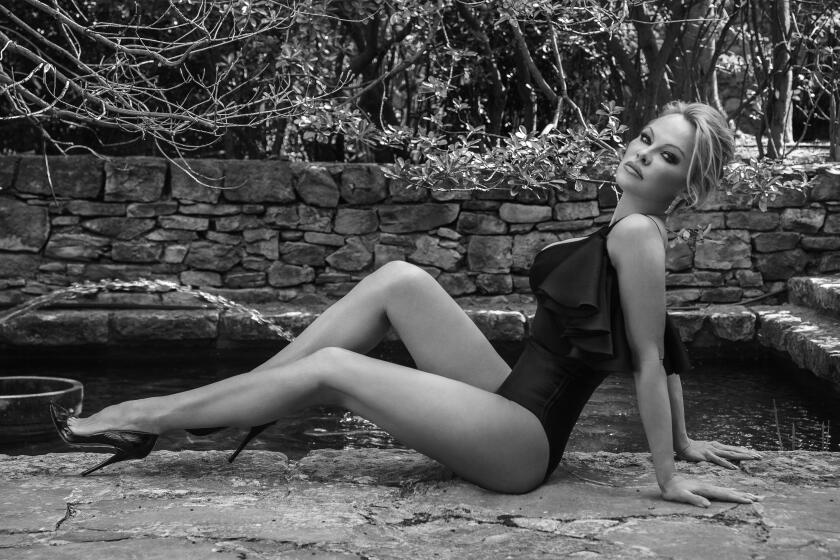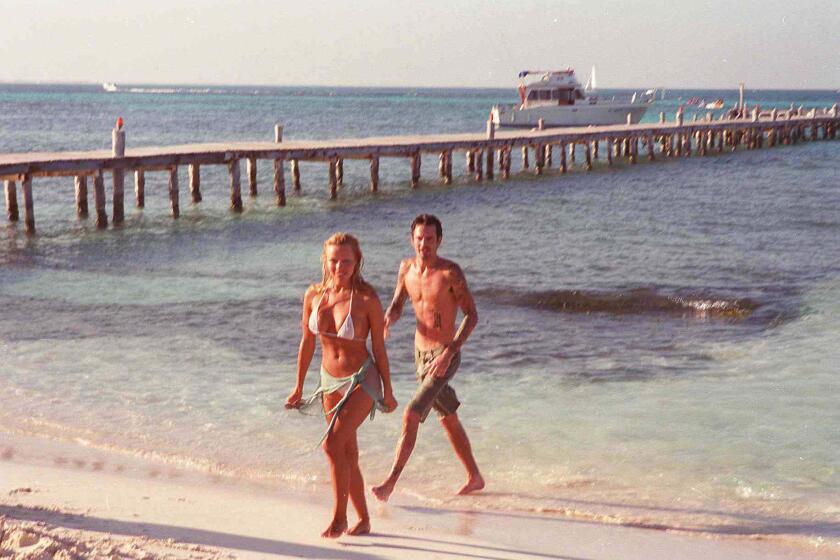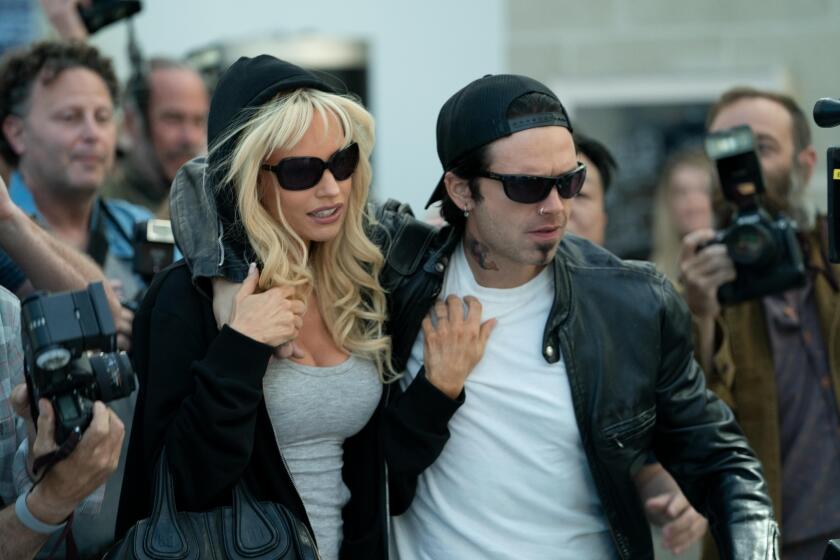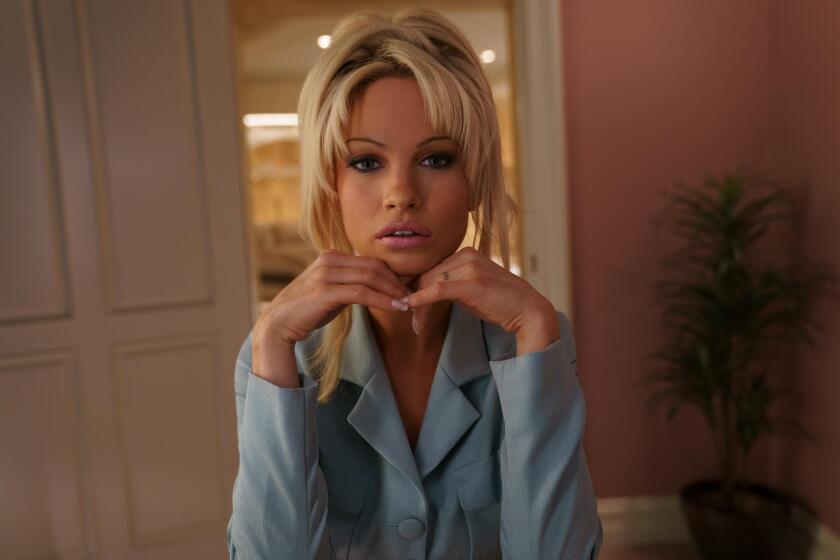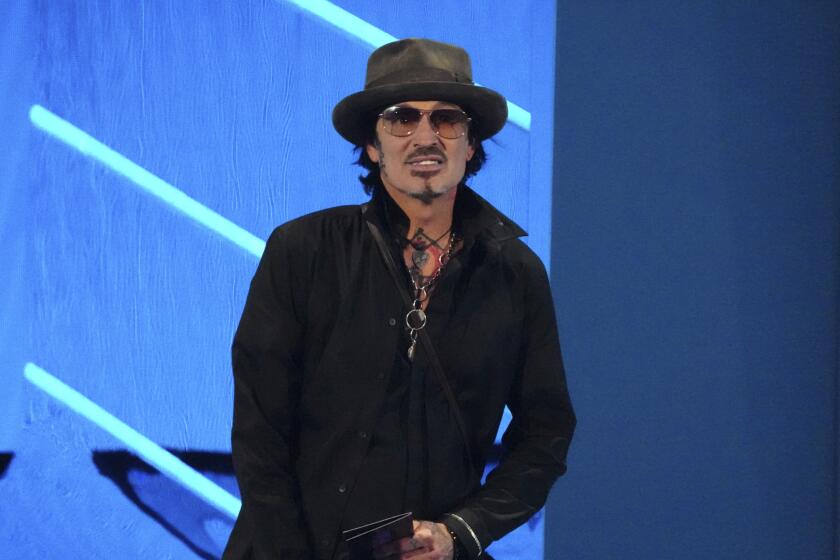5 times Pamela Anderson’s memoir left us wanting more — a lot more

- Share via
“Love, Pamela,” the new book by bombshell-slash-activist Pamela Anderson, covers a lifetime in 230-odd pages. It works out to about a little more than four pages for each year of her life — the chronological equivalent of a rock skipping over the surface of a deep, glacier-fed lake, like those sprinkled around Anderson’s birthplace on Vancouver Island, Canada.
The result? There are lots of moments where the reader is left wanting more, either because the author handles an incredibly heavy topic with “striking brevity,” as The Times’ Mary McNamara notes in her “Love, Pamela” review, or because after Anderson delivers more generous details, myriad new questions arise.
Nothing like having to look things up the entire time you’re reading, eh? Hopefully this will help with that.
All quoted material below was written by Anderson. She explains that in the acknowledgments, in a chunk of the free-verse poetry that fills the book: “Let’s just say this journey has been ... therapeutic? / Digging my heels in, demanding that I write this book myself. / No ghostwriters / no collaborators / or book doctors.”
Following the new double-dipping template of memoir and documentary, Pamela Anderson finally tells her own story with remarkable matter-of-factness.
Molestation by a babysitter
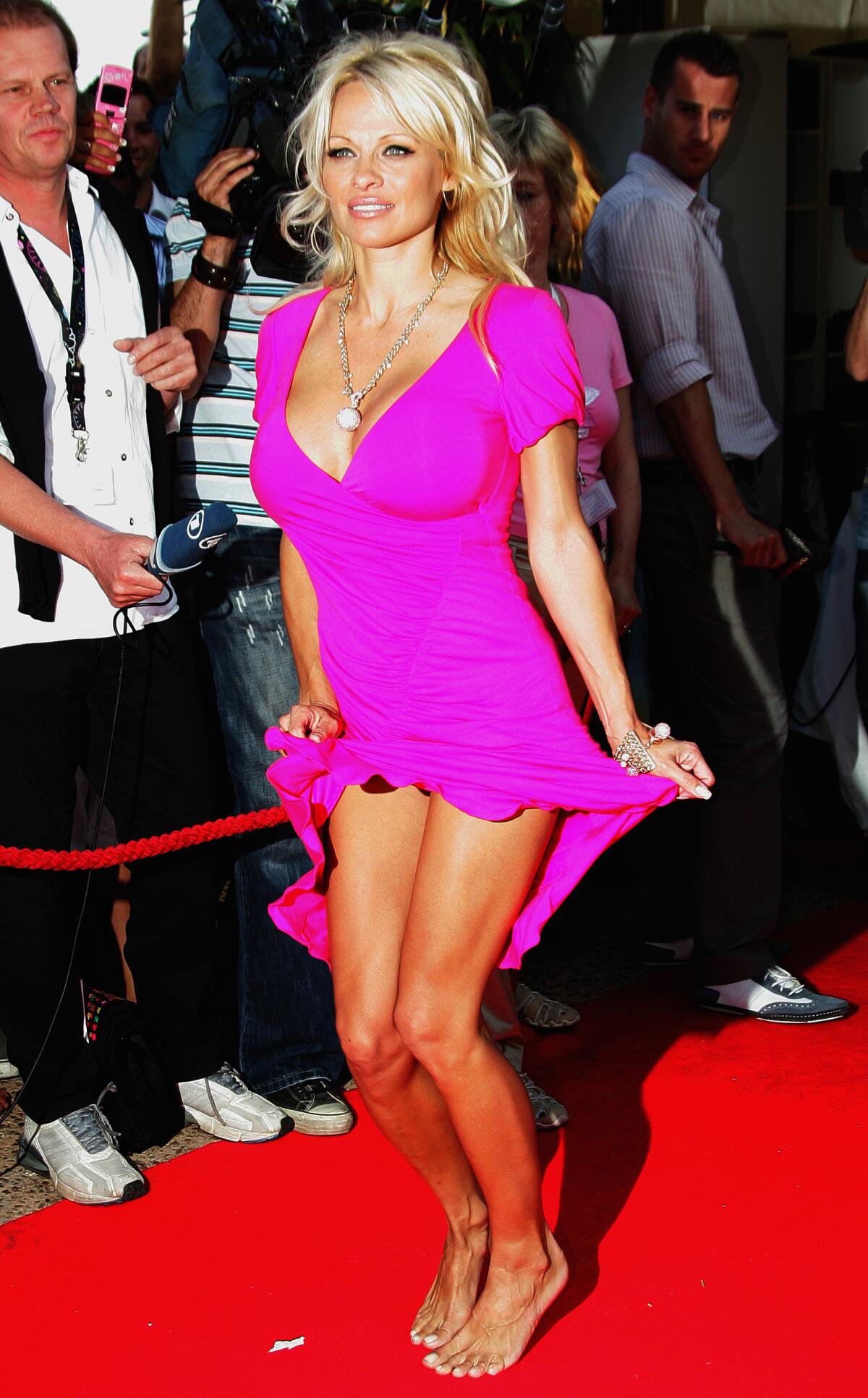
“At a young age, I learned that people are mostly awful. Babysitters even worse.
“That’s what happens with you are inappropriately messed with as a child. In my case, it was a young female babysitter who sexualized me very early, forcing me to play weird games on her body, like ‘car.’ She’d bring me used toys — like a life-size Barbie head where I could style the hair and put makeup on the face. My parents thought she was generous and kind, when really, it was just a way to get them off the scent. At the time I couldn’t understand any of it. She threatened me and told me not to tell anyone. Or else.”
There are limits, of course, to what we can expect Anderson to remember of a traumatic childhood incident, or to agree to re-live in print. But it’s hard to understand what is being alleged without knowing more, such as the rules of “car.” More details about how the situation unspooled, and how Anderson coped with it, might have illuminated its lasting effect more fully than these two lone paragraphs. It could even have been helpful to others who went through something similar or want to avoid it happening to their own children.
To accompany the premiere of Hulu’s ‘Pam & Tommy,’ we’ve compiled a timeline of key developments in the saga, with Times coverage.
The Playboy shoots
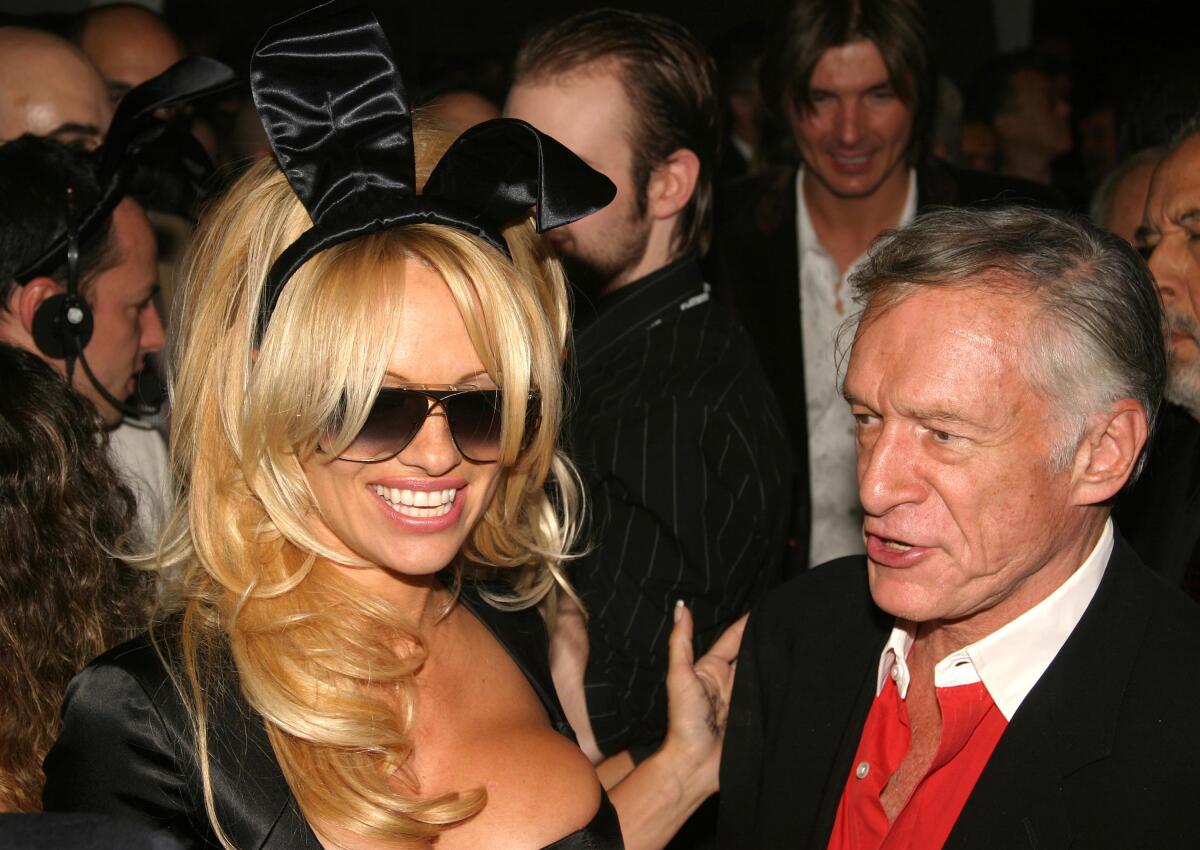
“I moved slightly — smiles, no smiles, hat to the side, jacket open. Tracey came back in to touch up my makeup, my lips, my hair .... She pulled my jacket open slightly wider. More photos, the photographer saying things like, ‘Beautiful ... You’re perfect.’ Tracy touched my boob to enhance my body cleavage. They asked me to soften my stomach, saying my ribs were too sharp. I started to feel nauseous, faint, I had to stop. I ran to the bathroom and got sick. My makeup was ruined. I couldn’t believe a woman had touched me there, I just couldn’t.”
Anderson was noticed on a jumbotron at a Canadian football game, then whisked away to L.A. to possibly make it into Playboy magazine. Next thing you know, she’s getting the royal treatment at the Playboy Mansion, Hugh Hefner adores her... and then this interlude. They got the shot in the first roll of film, so the makeup mess she mentions never became an issue, but its mention in “Love, Pamela” is anything but conclusive.
“It was hard to believe it was me — yet I was still disappointed, somehow. My self-image was so corrupt. It was difficult to accept when I later came to terms with that — I realized I was a work in progress and that my past may have had a serious impact on my self-esteem.”
So was Anderson saying that she posed nude because she had low self-esteem after her rough childhood, which included horrors beyond the babysitter? Or was she saying that growing up a self-proclaimed tomboy made her doubt her feminine allure? Also, why did the other Playmates — whose ranks Anderson joined, to the tune of 13 Playboy covers total — have a saying related to centerfold shoots: “If it doesn’t hurt, it doesn’t work”?
She did learn, she writes, how to be put in position, hold it, then look relaxed and sensual, all without breathing, while they set up centerfold shots. Good times. That said, there’s no mention and no examples of what the photos actually looked like, or how Anderson felt about them. But apparently, it was very important to point her toes.
Here is a bit more free verse too, popped in after another Playboy-shoot anecdote: “It was authentic / All happening on camera / In real time. / Hef called me / the DNA of Playboy.”
Reframing of the couple’s sex tape saga has mixed results, but the series’ treatment of culture at the dawn of the internet is stupidly entertaining.
The sex tape
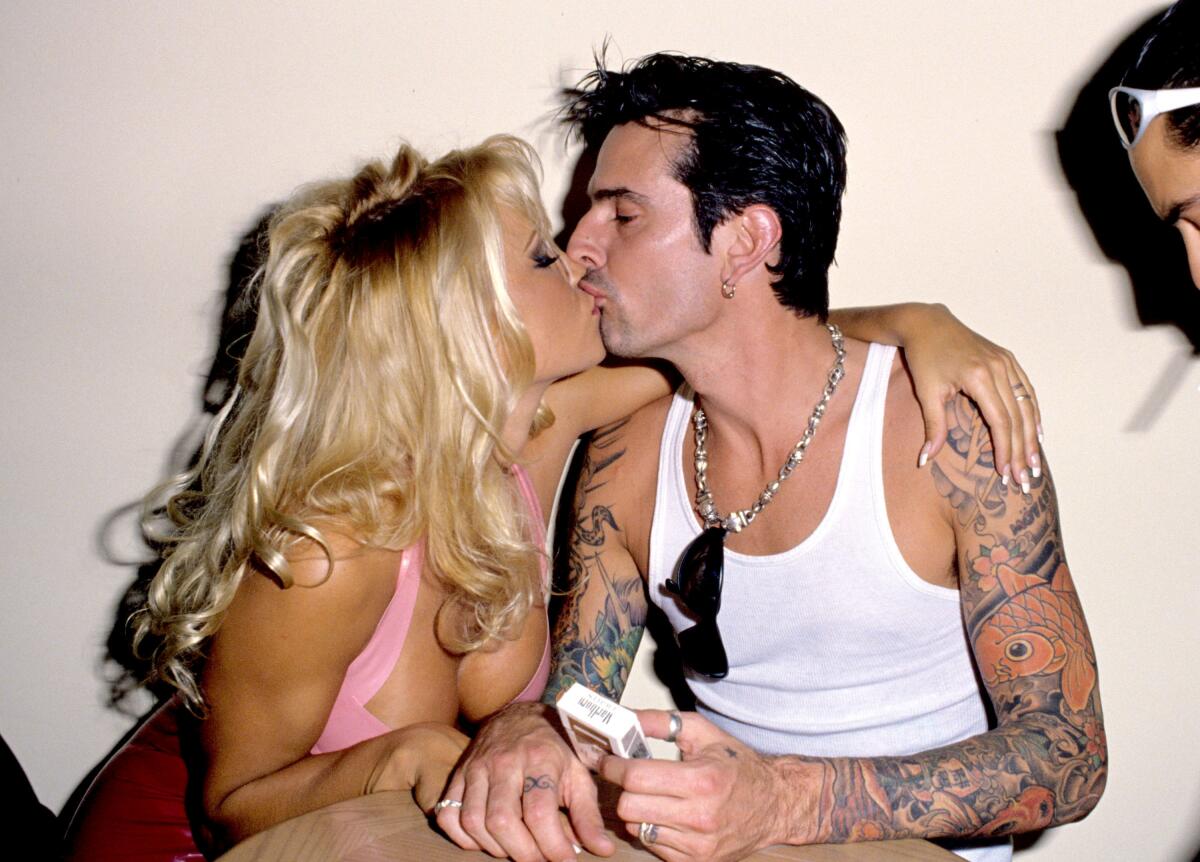
Sure, everyone knows about the Pamela Anderson-Tommy Lee sex tape — the one that arrived in the late ’90s, right around the time pornography began to flood the internet. But according to Anderson’s free verse, “We never made a ‘sex tape.’ / We just filmed each other, always, / and lived a sexy passionate life: Sweet newlyweds. / Just / two crazy, naked people / in love.”
“Then, strangely, we got a message from Bob Guccione of Penthouse. He warned that he had a video of us having sex. He offered five million cash for the rights to them. We were in shock, wondering if it could even be true — we had no memory of filming anything so crazy. We told him to go f— himself. And that we wanted back any tapes he had in his possession.”
Guccione wound up running a few stills from the recording in his magazine. But the tape came out anyway. It was actually a spliced-together compilation of footage, Anderson writes, that had been in a large, hidden safe that was stolen from its garage hiding place. Lee watched the tape, but she never did.
Anderson, who was pregnant at the the time with their second child, describes the demeaning depositions that accompanied a lawsuit they brought against the “cheesy company” that was distributing the tape. The fact that she had posed naked for Playboy was used to argue she had no right to privacy anymore; naked pictures of her were blown up and placed behind the attorneys acting on behalf of the tape’s “evil distributor.”
“They ended up making hundreds of millions of dollars off the spliced-together home movies of us. We endured years of embarrassment, harassment, and stress — not to mention what our families went through, our parents, our siblings, and how it affected our kids when they got older and were teased in school. ... It was one of the most difficult things I’ve ever gone through. It is still a great cause of pain for all of us.
“It ruined lives, starting with our relationship — and it’s unforgivable that people, still to this day, think they can profit from such a terrible experience, let alone a crime.”
The six pages given to the sex tape contain plenty of Anderson’s feelings, but clearly cannot begin to convey all the nuances of the battle to contain it.
With the Hulu series’ short, potent sixth episode, writer Sarah Gubbins and director Hannah Fidell capture a woman in crisis. Here’s how they did it.
Tommy Lee’s arrests ahead of their divorce
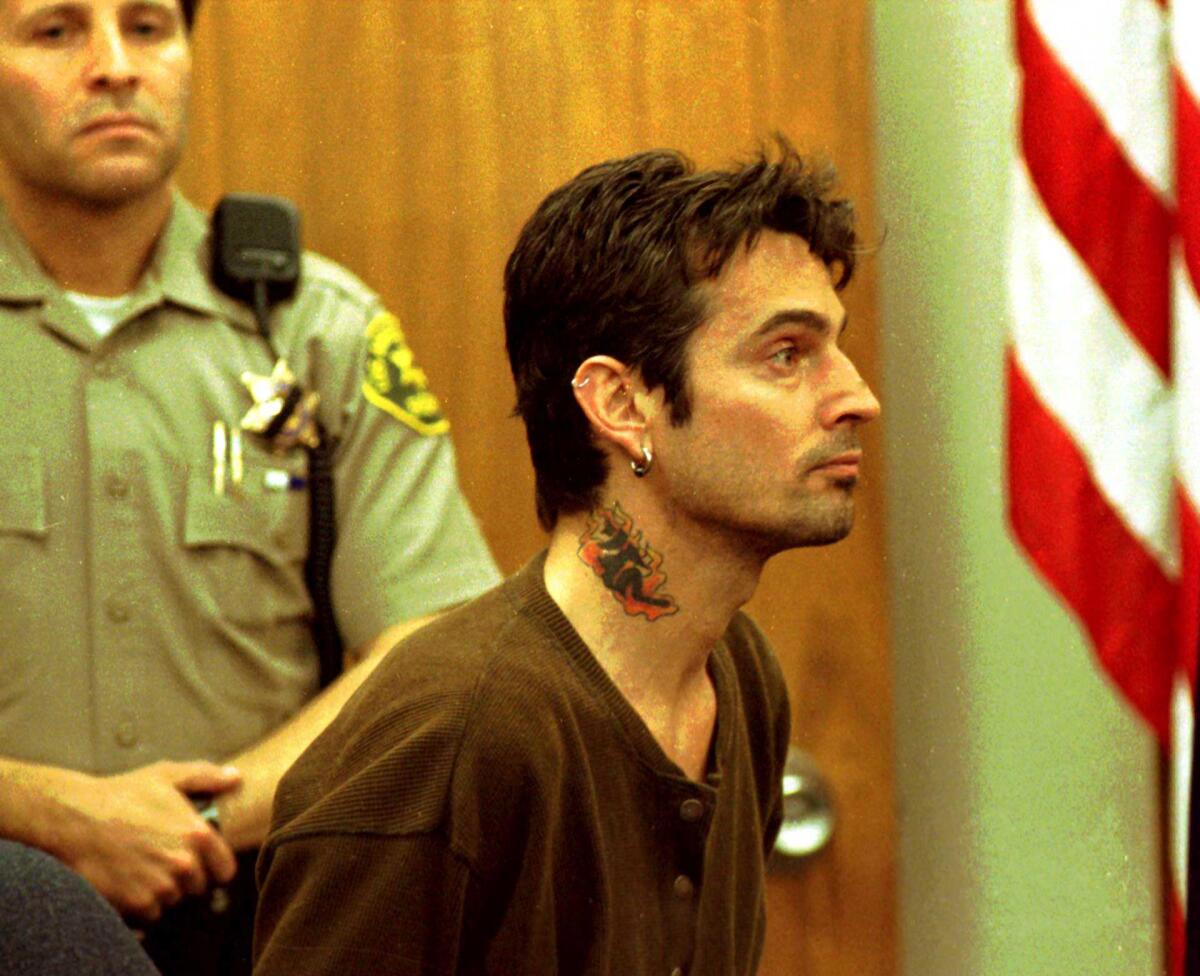
“I was bleeding and marked up, in shock. The police pressed charges — they had to, with or without me, when they saw my condition. When they asked if there was a gun in the house, I naively said yes, there was a Glock handgun in our bedpost. Tommy was on probation and was immediately arrested. He went to jail. Our hell began.”
Lee had laid hands on Anderson while she was holding their newborn second son. They were both tired and overwhelmed, but he didn’t want her to call her parents to come help them and she snapped at him, “You have to grow up, Tommy, it’s not just about you anymore.”
He grabbed the phone away from her, twisted her arm and tore off her fingernail (“blood was dripping down my arm”), she says in the book. Lee threw her and 7-week-old Dylan into a wall, then grabbed older son Brandon and took off running down the street. She called 911, and the rest — including their marriage — was history.
But why was he on “probation” in the first place? Well, along with Mötley Crüe bandmate Nikki Sixx, Lee had been arrested in Arizona in December 1997 after allegedly attacking a security guard during a show in Phoenix. Lee had urged fans to come onstage, and the 18-year-old guard was trying to hold them back. So the two rockers allegedly tackled, kicked, beat and spit on the guard. Bad move.
The two were awaiting trial on assault charges when the domestic violence went down at home, so “on probation” might not have been the exact reason he wasn’t allowed to possess a gun. Ultimately Lee was convicted of misdemeanor assault in August 1998, but his one-month jail sentence got swallowed up by the six months he was serving by then for his later domestic violence conviction.
Anderson wouldn’t answer Lee’s letters that he wrote daily from jail, she says in the book. They divorced after three years of marriage. However, they have gotten back together several times since then.
“My relationship with Tommy may have been the only time I was ever in love.”
Mötley Crüe drummer Tommy Lee says he was on a bender when he exposed himself on Instagram and Facebook earlier this month.
The Malibu Colony house and Paradise Cove trailer
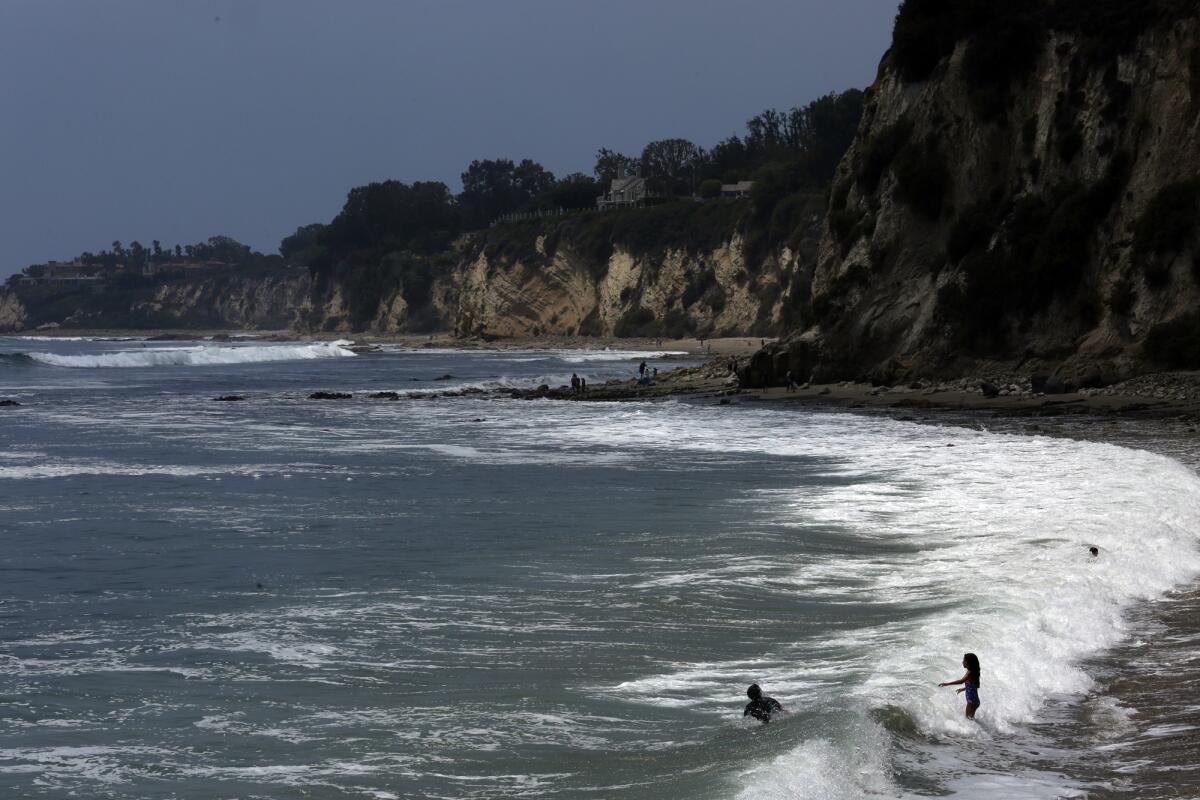
“Building my place in the Colony in Malibu literally took years — and everything I had. When the construction became too much, we moved to a trailer I’d bought in Paradise Cove, which was the best purchase I’d ever made.”
That paragraph leads into one of the book’s more detailed segments, where Anderson recounts early morning surf trips with her sons, her “famous waffles” breakfasts served to any kid who stopped by, “scrappy and creative” annual yard sales that benefited the Pamela Anderson Foundation, lemonade stands that raised $30,000 for the California Wildlife Center. But that’s all about life when they stayed in the trailer, not the house.
So what about the dang house, which Anderson talks about pouring tons of money into over the years? What did she actually do to it?
“I loved our cottage, a refuge right on the beach. We lived in The Colony, the only gated community in Malibu. Our shingled home was cozy, all roses and French antiques. I tried to create a place of safety and stability for my boys. Nothing felt better than living at the water’s edge.”
Anderson bought the house clad in wood and glass — not exactly a “cottage” — in 2000 for $1.8 million. It faces Malibu Lagoon State Beach, with a private pathway winding down to the sand. The open floor plan has 5,500 square feet with a retractable sun roof that allows for indoor-outdoor living, plus a guest house, a wood sauna, a fire pit and a pool.
As for what she finally sold the Colony house for 20 years down the line, there’s an answer to that readily available. She raked in some dough.
More to Read
Sign up for our Book Club newsletter
Get the latest news, events and more from the Los Angeles Times Book Club, and help us get L.A. reading and talking.
You may occasionally receive promotional content from the Los Angeles Times.
